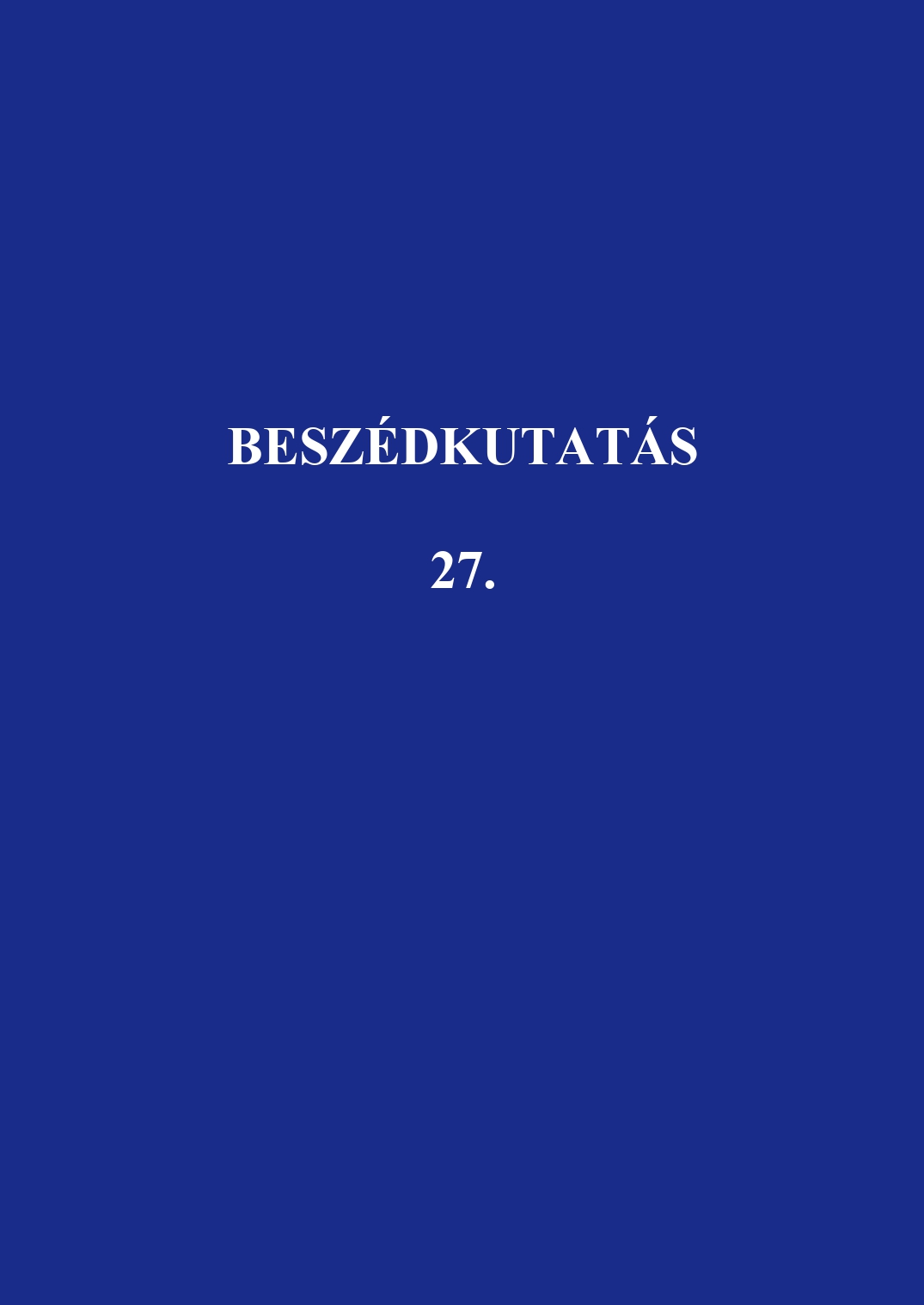A néma szünetek és a hallható levegővétel viszonya a spontán beszédben
Abstract
The relation of silent pauses and audible breathing in spontaneous speech
Speech is occasionally interrupted by pauses of various length. They are essential parts of human speech. Until the first half of the 20 th century researchers examined the pauses mainly from rhetorical aspects, they analysed the relationship between punctuation of written texts and their spoken realisations. Until now it is not clarified what can be actually considered as pause, how differently pauses can appear in speech, what are their acceptable minimum and maximum durations, and what functions they may have in speech. Empirical researches showed that silent pause is the most common phenomenon in the spontaneous speech, and it has many different functions in spontaneous speech (e.g. breathing, marking syntactic boundaries as well as speech planning difficulties, time for self-repair). There are still many controversies about the relationship between silent pause and breath-taking.
The aim of the present study is to investigate whether breath-taking is subordinated to thinking and is not performed by biological functions in spontaneous speech. Our study focuses on the analysis of the temporal structure of silent pauses and breaths in Hungarian spontaneous speech. We hypothesized that there would be proportional and/or durational differences among pause categories depending on breath-taking.
Results provide detailed information about the relationship between silent pauses and breath-taking. In addition, results can be used in various areas of speech technology, or speech therapy.
A Beszédkutatásba leadott tanulmányokat máshol változatlan formában megjelentetni nem lehet. Más személy a szerkesztőbizottság engedélyével és megfelelő hivatkozással használhat fel ábrákat a publikált tanulmányokból.





